MD at Appetite Creative Jenny Stanley on how packaging is a pathway to a sustainable future, and the death of the barcode.
At our recent Global Connected Packaging Summit 2023, a host of industry experts from Tetra Pak, Garcia Carrion, Amazon, Kellogg’s, Danone, Colgate and many others, discussed current packaging trends and how these might continue to change the way we use and interact with packaging.
The two-day conference brought together industry leaders, experts, and innovators to explore the transformative potential of Connected Packaging in creating seamless connections across both digital and physical spaces.
The first day took a deep dive into Unleashing the Power of Connected Packaging, Packaging as a Pathway to a Sustainable Future and the Death of the Barcode among other topics.
The key takeaways included:
1. It’s time to tap into tech for plastic waste management
Peter Nitschke, Global Director for Community Partnerships at Plastic Bank, outlined how the company supplies a traceable and transparent supply chain for collecting plastic waste, using blockchain technology to ensure fairness and accountability. Collectors of plastic can earn digital tokens, which can then be exchanged for various services, such as food vouchers and health insurance.
Plastic Bank’s partnerships with global brands like SC Johnson helps these corporations to use collected ‘social plastic’ in their products. This initiative not only mitigates plastic pollution but also creates economic opportunities for communities struggling with poverty.
In countries like the Philippines and Indonesia, Plastic Bank has joined forces with Coca-Cola to provide recycled plastic to use in packaging. The importance of creating ethical and traceable supply chains through these partnerships, contributes to sustainable development goals and the protection of human rights.
2. Sustainable paper packaging looks to replace plastic
Sonia Pelacheva, Sales Manager for Vela at Seaman Paper shared how they are combating plastic pollution by offering sustainable paper alternatives. Specialising in paper and packaging solutions primarily for the garment and fashion industry, Seaman Paper is committed to replacing single-use plastics with paper.
The paper is crafted from responsibly sourced, renewable materials and is biodegradable, unlike plastic which persists in the environment. Also, being one of the most recycled products globally, paper emerges as a more sustainable choice for packaging.
To counter misinformation Seaman Paper offers transparent and detailed information about their packaging’s environmental impact. She emphasised the importance of sustainable practices in the fashion industry, known for its significant pollution.
Despite a small non-recyclable percentage due to the glue, the overall recyclability of their bags stands at 98.7%, making them easily recyclable in most paper processing facilities. By giving precedence to sustainability and enacting innovative solutions, manufacturers can play an instrumental role in moulding a sustainable packaging environment.
3. Farewell to traditional barcodes
Phil Archer, Director of Web Solutions at GS1, shared his views on the expanded capabilities offered by the GS1 Digital Link standard and the potential of these two-dimensional barcodes to transform packaging practices for a more informed and efficient future.
The global transition from traditional barcodes to two-dimensional barcodes, is a shift driven by the increasing demand for additional data by both retailers and consumers. Industries from retail to healthcare and construction are impacted by this change.
These two-dimensional barcodes could serve as a media channel, allowing brands to offer consumers more information about their products, such as sustainability data, origin details, instructions, recipes, and more. It can also help guide consumers to specific information according to their needs, such as different language versions, all from scanning a single QR code.
4. The future is serialised QR codes
Ali Azhar, Associate Product Manager at Tetra Pak, delved into serialised QR codes. These unique QR codes assigned to individual product packages enable package traceability throughout the supply chain. They can deliver supply chain traceability, quality control, sustainability monitoring, and counterfeit product prevention. Additionally, they can track customer behaviours and underpin loyalty campaigns.
Drawing a distinction between static and dynamic QR codes, he explained that while a static QR code is permanently linked to specific content, a dynamic QR code can be programmed with ‘active’ content that can be adapted at different times of the day or in different locations.
TetraPak uses QR codes to support food and beverage manufacturers with individual brand needs and objectives. The company helps brands to choose the right type of QR codes, facilitate printing, and supple insights into effective marketing campaign strategies.
To drive engagement, brands can run campaigns encouraging consumers to share their product photos on social media. To increase sales, brands can motivate more QR code scans with the prospect of winning a prize.
Serialised QR codes, already allow suppliers to track packages at any given point within the value chain. For marketing and sales teams, the benefits can include direct sales promotion. In the future, there is potential to integrate with the Internet of Things with QR codes triggering automatic product orders, but there are privacy laws and user data privacy considerations with this next iteration.
5. E-labels support legislative changes
There are significant legislative changes impacting packaging. New European Union (EU) labelling requirements for wines sold within EU member states are set to be enforced from December this year with strict penalties for non-compliance.
QR codes can be an optimal solution for wineries to comply with the new labelling requirements as they allow for automatic translation, real-time label updates, and provide information based on the consumer’s location.
At Appetite Creative, we’re helping wineries with label design and the implementation of e-labels and QR codes. These labels and codes offer dynamic digital content like product details and nutritional values, as well as valuable consumer engagement insights.
For more information and to watch the sessions visit: connectedpackagingsummit.com
Jenny Stanley is MD at Appetite Creative, for more information visit: appetitecreative.com.
